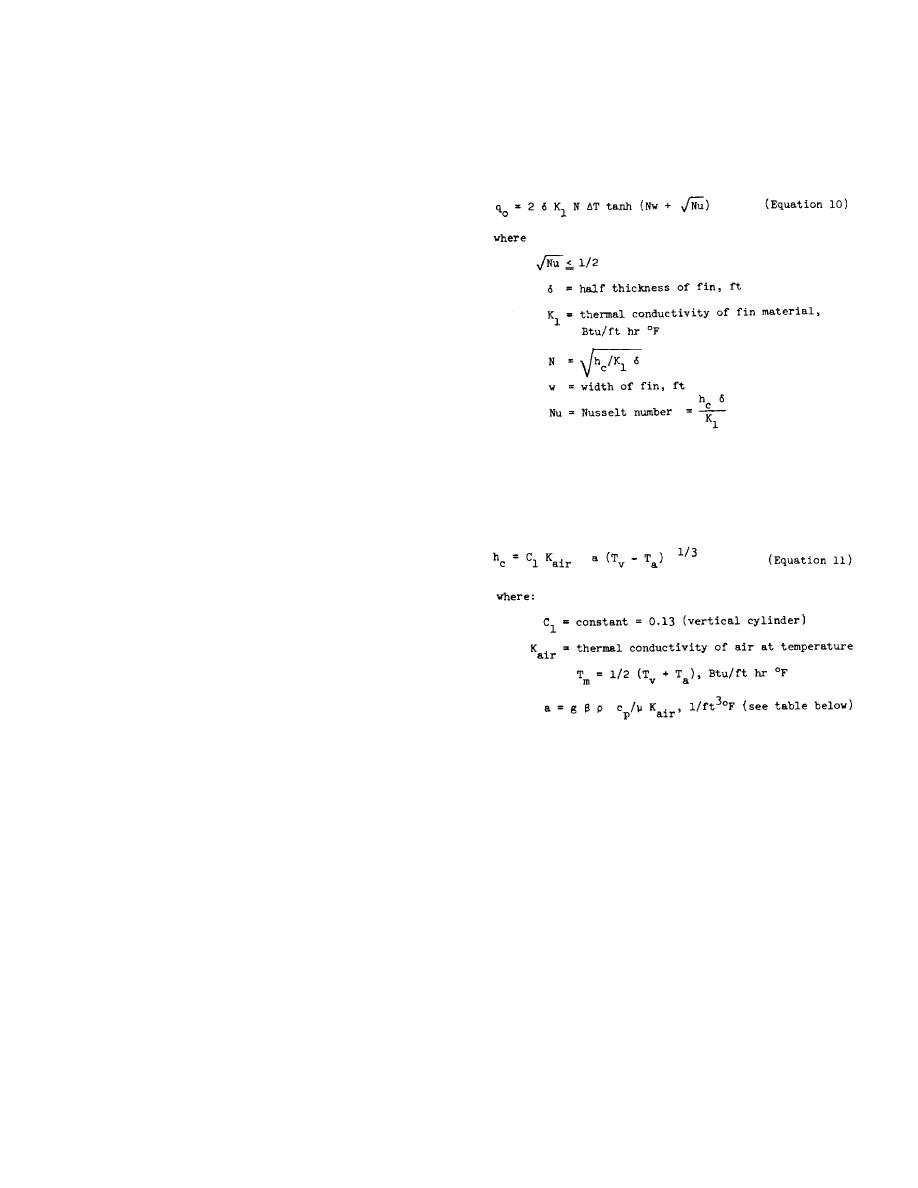
TM 5-852-4/AFM 88-19, Chap. 4
that the effort required to advance the pile is similar to
La = length of pile exposed to air, ft
(b) The addition of fins to the pile
that required for a closed-end pipe pile and may make it
impossible to advance the pile at all. Normally H piles
improves its heat transfer capability. An indication of this
improvement can be determined for a unit length of pile
require less additional effort in the spring as compared to
fall.
per fin by:
(d) The design engineer should
therefore carefully consider the period of installation with
respect to mobilization, transportation, work and
equipment efficiency, ground water and soil problems
when augering as well as the attendant freezeback time.
Since the problems associated with the installations at
different periods of the year will be reflected in the
quotations.
e. Heat transfer by thermal piles.
(1) Two-phase thermal piles.
(a) As previously noted, the two-
phase system operates on an evaporation-condensation
cycle wherein the vapor condenses on the inner walls of
the pipe pile and flows down the pipe walls to mix with
the liquid phase. The requirement for spontaneous
operation of the device is that the temperature in the
upper reaches of the interior wall must be colder than the
(c) For the case of unfinned piles, natural
saturation temperature of the vapor. The selection of the
convection (no wind), and assuming that turbulent
refrigerant should consider such factors as its vapor
conditions generally prevail, the equation q = hc A ∆T =
pressure, vapor density, and flammability. A refrigerant
hc A (Tv - Ta) (equation 9) is modified by introducing:
having a low vapor pressure at a given temperature will
tend to minimize the leakage potential and to simplify
sealing. A high liquid density at a given temperature will
tend to increase the gravity forces which remove the
liquid condensate after its formation on the upper walls of
the pile. Although the thermodynamics of the internal
pipe refrigerant are important, particularly the thermal
resistance of the condensate film which varies in
thickness along the interior pipe wall, the governing
resistance (exclusive of the freezing soil surrounding the
pile) may be assumed to be the air boundary layer on the
pile's exterior surface. This is particularly true for
conditions of heat transfer from the exposed portion of
the pile by essentially natural convection. On this
where:
assumption, rate of heat transfer to the exterior from the
exposed surfaces of a two-phase thermal pile may be
a is determined for the mean temperature condition, Tm
estimated using the following equation: further, assuming
that; the pipe and soil are in intimate contact along the
2
g
= acceleration of gravity, ft/sec
entire buried portion; the pipe relies solely upon heat
dissipation from its vertically oriented surface i.e., no
0
= coefficient of expansion for air, I/Fabs
horizontal piping connections at the surface) and; the pile
is of sufficient diameter so that the upward vapor flow
p
= air density, lb/ft'
and downward condensate flow do not impede their
mutual development:
cp
= specific heat of air at constant pressure,
Btu/lbm F
∆T
= TV - Ta, F
J = absolute viscosity of air, Ibm/ft hr
= refrigerant vapor temperature, F
TV
= ambient air temperature, F
Ta
= surface area of pile exposed to air per lineal foot,
Al
2
ft
4-124



 Previous Page
Previous Page
